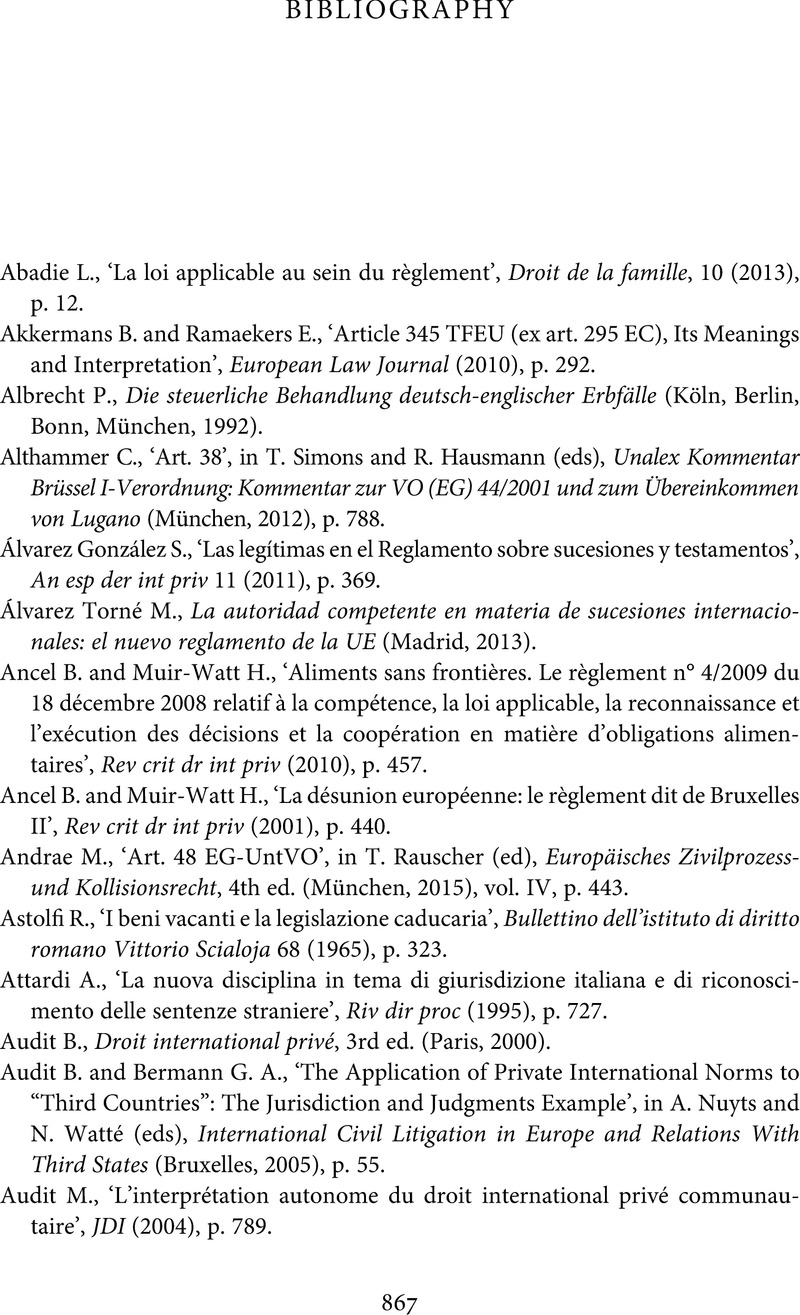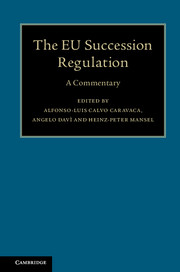Book contents
- The EU Succession Regulation
- The EU Succession Regulation
- Copyright page
- Contents
- Contributors
- Foreword and Acknowledgements
- Abbreviations
- Introduction
- Chapter I Scope and Definitions
- Chapter II Jurisdiction
- Chapter III Applicable Law
- Chapter IV Recognition, Enforceability and Enforcement of Decisions
- Chapter V Authentic Instruments and Court Settlements
- Chapter VI European Certificate of Succession
- Chapter VII General and Final Provisions
- Bibliography
- Index
- References
Bibliography
Published online by Cambridge University Press: 10 November 2016
- The EU Succession Regulation
- The EU Succession Regulation
- Copyright page
- Contents
- Contributors
- Foreword and Acknowledgements
- Abbreviations
- Introduction
- Chapter I Scope and Definitions
- Chapter II Jurisdiction
- Chapter III Applicable Law
- Chapter IV Recognition, Enforceability and Enforcement of Decisions
- Chapter V Authentic Instruments and Court Settlements
- Chapter VI European Certificate of Succession
- Chapter VII General and Final Provisions
- Bibliography
- Index
- References
Summary

- Type
- Chapter
- Information
- The EU Succession RegulationA Commentary, pp. 867 - 902Publisher: Cambridge University PressPrint publication year: 2016



